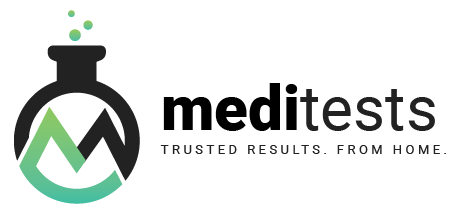What is SAMHSA?
The Substance Abuse and Mental Health Services Administration (SAMHSA) is a key branch of the U.S. Department of Health and Human Services (DHHS). Its primary mission is to improve the quality and availability of services for individuals dealing with substance abuse and mental health issues . SAMHSA's work includes prevention, treatment, recovery services, and the promotion of mental health across the country.
Key Responsibilities of SAMHSA:
- Substance Abuse Prevention and Treatment : SAMHSA works to reduce the prevalence of drug addiction and misuse, helping individuals at risk of substance abuse to find treatment.
- Mental Health Services : It supports mental health services, helping to treat conditions like depression, anxiety, and other mental disorders.
- Community and State Programs : The organization provides funding and support to local and state programs to improve the accessibility and quality of treatment services.
- Research and Data Collection : SAMHSA funds research on substance abuse and mental health issues to guide policy and improve treatment practices.
SAMHSA’s Collaboration with Other Agencies
SAMHSA works closely with several other federal and state agencies to tackle substance abuse and mental health challenges. These include:
- NIDA (National Institute on Drug Abuse)
- FDA (Food and Drug Administration)
- CDC (Centers for Disease Control and Prevention)
SAMHSA’s efforts are strengthened by collaboration, ensuring a unified approach to drug abuse prevention, mental health treatment, and crisis management.
SAMHSA’s Efforts in Prevention and Treatment
SAMHSA emphasizes prevention and early intervention to reduce the long-term effects of substance abuse and mental illness. Here are some ways SAMHSA contributes:
- Access to Recovery : Provides financial assistance for individuals seeking drug and alcohol treatment through community-based services.
- Community-Based Services : SAMHSA funds programs that provide recovery services, especially in underserved areas.
- Training and Education : Offers programs to improve the skills of professionals who provide mental health and substance abuse services.
The Importance of Early Detection and Prevention
Substance abuse and mental health issues can often be addressed more effectively when detected early. SAMHSA focuses on using research-based prevention services and state-of-the-art treatment options to reduce the long-term impact of these disorders.
SAMHSA’s Centers and Initiatives
SAMHSA operates several specialized centers to address specific areas of concern:
- Center for Mental Health Services (CMHS) : Focuses on expanding mental health services for both adults and children, especially those with emotional disturbances.
- Center for Substance Abuse Treatment (CSAT) : Provides resources and support for individuals in need of substance abuse treatment.
- National Clearinghouse for Alcohol and Drug Information (NCADI) : Offers the public the largest federal source of information on substance abuse, research, and prevention.
- Office of Applied Studies (OAS) : Collects national data on behavioral health issues and practices to inform public policies and services.
SAMHSA’s Role in Addressing Mental Health and Substance Abuse
SAMHSA has made significant strides in reducing substance abuse and improving mental health care by following these principles:
- Prevention is Possible : Through education and community initiatives, SAMHSA works to reduce the demand for illegal drugs and prevent substance abuse.
- Recovery is Achievable : SAMHSA believes that individuals suffering from addiction or mental illness can recover with the right treatment and community support.
- Evidence-Based Approaches : SAMHSA uses research-based methods to guide treatment and prevention strategies.
Funding and Programs
SAMHSA receives an annual budget of $3.3 billion from the federal government and private sector donations. This funding is allocated to support:
- Substance abuse prevention programs in schools and communities.
- Mental health services for individuals with mental health conditions.
- Research into effective treatments for addiction and mental health disorders.
Start Early Drug Prevention programs are one of SAMHSA’s focus areas, aiming to prevent addiction in children before they reach adolescence.
SAMHSA’s Impact on Communities
SAMHSA’s grants and initiatives are designed to:
- Provide financial support to drug and alcohol treatment centers.
- Support local service providers in offering better treatment options.
- Increase awareness about the importance of early intervention in preventing mental health and substance abuse issues.
Key Statistics on Substance Abuse and Mental Health:
- Nearly 20 million adults aged 18 and older suffer from serious mental illness.
- 1.2 to 1.6 million emergency department visits annually are related to drug misuse, according to the Drug Abuse Warning Network (DAWN).
- Over 20 million Americans aged 12 and older struggle with substance abuse or dependence.
SAMHSA’s Commitment to Children and Families
SAMHSA is committed to protecting children and families from the harmful effects of substance abuse. Many children experience addiction issues before adolescence, which makes early intervention critical. SAMHSA supports programs designed to:
- Prevent addiction in youth by providing research-based education and intervention.
- Offer treatment options to families affected by substance abuse and mental health issues.
Conclusion: SAMHSA's Vital Role in Public Health
SAMHSA plays a crucial role in improving the quality of life for individuals affected by substance abuse and mental health conditions . By focusing on prevention, early intervention, and evidence-based treatment , SAMHSA helps individuals lead productive lives free from the challenges of addiction and mental illness. Through partnerships with local and federal organizations, SAMHSA is working toward a healthier, more informed society.


















































































